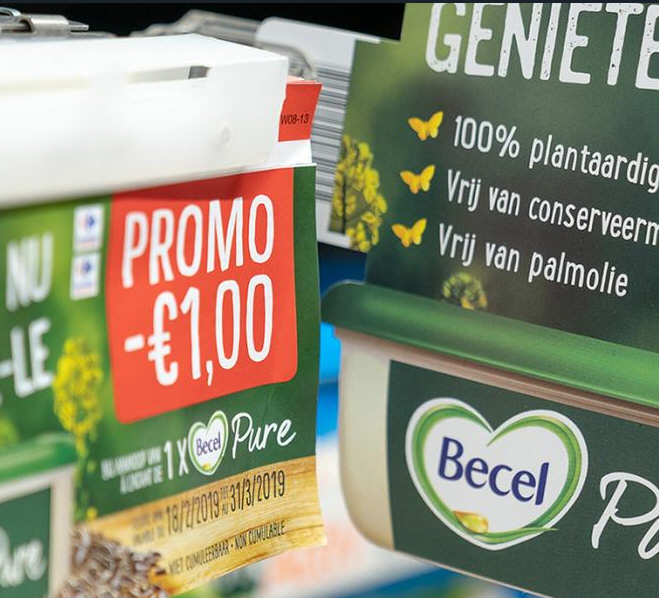How to increase your sales with the right customer incentives
This article gives you a better understanding of customer-incentive programmes. You’ll learn which sorts of rewards to use, when to offer them and how to put your own programme together.
What is incentive marketing?
Incentive marketing is becoming increasingly popular with businesses as a tool to stimulate sales and loyalty. It’s proven to be a powerful way for companies to attract, keep and motivate customers. Incentive marketing includes the offer of rewards in exchange for desired customer behaviours. The rewards may be anything, from discounts to promotional products, including merchandise and coupons. With the right strategy, incentive marketing helps companies increase their profit margins and improve customer engagement.
What are the benefits of using incentive marketing?
Starting up a customer-incentive programme requires investments and effort on your behalf. Why would a company offer customer incentives?
Increased customer loyalty:
When you give customers incentives, they see them as rewards, not as marketing hacks. This is why customer-reward programmes make sure people feel rewarded. People will be more prepared to buy from you and purchase your brand, for years, just to keep receiving these pleasant little bonuses. As well as retaining customers, customer loyalty turns casual buyers into brand ambassadors; they’re more likely to leave positive reviews, invite friends and talk about your company.
More involved customers:
A good loyalty programme will deliver new customers. If you have a section on your website that advertises your loyalty programme, it immediately informs visitors that you will reward them as soon as they become your customer. If they like your offer, it may be reason enough for them to place their first order or drop by your store.
Gathering customer data:
Before allowing anyone to participate, it’s best to ask them to share their name, email address and other relevant contact details with you. Use this information, not just to reward your customers, but to inform them about other events and campaigns. You’re able to use contact details to upsell, promote new products or services, ask customers to follow you on social media, etc.
User-generated content:
This includes photos, videos, reviews and other content that is focused on your products or services. Unfortunately, people will rarely spend their time lauding your brand unless they receive something in return for it. However, one marketing and corporate strategy is very effective. Local-influencer marketing is on its way up; consumers would rather trust a real person than your advertisement or marketing message.
Increased income:
Incentives stimulate customer satisfaction and encourage people to make extra purchases. When someone hears they will receive a 10% discount for life after their fifth purchase, they will be quick to place an order.
When do you use incentives?
In general, incentives are relevant in two cases: when you want someone to perform a specific action and when you react to a completed action.
- Encouraging an action:
If you need a customer to do something, offer them a bonus in exchange for doing it. This increases the likelihood that the person will do what you want them to. For example, you might use this approach to:
- request feedback;
- upsell products;
- stimulate social-media involvement;
- generate more customers through an invite-a-friend initiative.
- Responding to a promotion:
Sometimes, you want to thank your customers after they have already contributed to the growth of your brand. Maybe you want to excuse poor service or an error on your side. Here are a few situations in which customer incentives are optimal:
- Expressing your gratitude after a review or user-generated content.
- Incentives after X years or X number of purchases.
- Celebrating the customer’s birthday and rewarding the customer with a special celebratory offer.
- Excusing yourself or an error (late delivery, incorrect delivery, technical defects, etc.).
What are the most popular rewards to offer customers?
Although there is great variety in customer-incentive programmes, they all make use of the same forms of leverage.
You can use them all or combine incentives on the basis of your marketing and sales goals.
- Bonus points
- Free gifts
- Discount coupons
- Cashback
- Discounts/promotions
- Buy-one-get-one-free offers
- Free postage
- Free upgrades of products or services
- Gift vouchers for partner companies
- Exclusive access to certain functions
- Invitations to events
Which strategy should you follow for your business?
You don’t need to reinvent the wheel to launch customer incentives. Market leaders have already invested in market research and tested different strategies to develop the most effective programmes. Use one of these basic structures and adapt it to your company’s needs.
Point-based approach:
People earn and collect points by making purchases or completing a different conversion. Points are later exchanged for something valuable.
Layered programmes:
People know how they will be rewarded when they advance from one level of a reward programme to the next. The higher the level, the higher the reward.
Discount coupons:
Reward customers with coupons when they become members of your community. Continue this by investing in email marketing with integrated e-coupons.
Cashback:
Buyers receive set amounts/percentages of their purchases back.
Loyalty:
Although the appearance of loyalty programmes varies considerably (from customer cards to referrals), they share the same fundamental concept: as soon as the customer proves themselves to be loyal to your brand (by staying with you, making purchases, inviting friends, etc.), they have the right to wonderful rewards.
Referrals:
Existing consumers invite potential clients using a special link they can copy from your website or their profiles.
Omnichannel:
Clients receive rewards through several channels. They may be something simple like a personalised product selection or early access to sales via an app.
Gamified:
The loyalty or rewards programme is set up like a game where the fun and excitement is in moving from one level to the next. It often includes progress bars, ranges, performances and leader boards that encourage people to compete.
Freebies:
Customers pay a fee to become members of a premium club and profit from freebies such as free sending, samples, content, gifts, etc.
Partnership:
People who participate in the programme receive bonuses from the company that offers the programme and their partners.
HighCo DATA helps you with all these strategies with personalised marketing and remarketing, including their e-couponing solution that provides your team with GDPR-approved opt-ins for your customers. You’ll target interested customers and this will considerably improve loyalty and purchase frequencies.
A step-by-step plan for launching an attractive programme
Now you know the basic principles, it’s time to start on your own project.
Determine your long-term goal:
Before you do something, you need to know what you want to accomplish. Maybe you would like to increase your sales or purchase frequencies, collect customer data, raise customer loyalty, etc. All these goals demand various approaches to building up your loyalty programme.
Budget planning & return on investment (ROI):
You’ll need to invest in the implementation of a loyalty programme and its marketing with your existing and potential customers. It’s a long-term investment that you need to calculate carefully. This is why you need to estimate how much you’re prepared to invest and what kind of ROI you expect.
See how others do it:
You don’t have to copy other companies, but learning from your competitors is an excellent way of researching your market.
Go to their websites or stores and enrol in a loyalty programme to see how it works from the inside out. You’ll be able to see the strengths and avoid the weaknesses.
Understand your customer:
Analyse your target group and draw up a customer persona to understand which reward or incentive will convert them. While some people are more inclined to value point-saving programmes, others prefer free postage and handling, or a personalised promotion.
Choose the software or platform to launch your loyalty strategy
Research:
Research the available platforms for the implementation of customer-loyalty programmes and choose one that meets your needs. Modern customer-incentive programmes are digitalised and available on multiple channels, so aim to provide both online and offline access if possible.
Maintain and improve the results:
Check the customer data to see how the implementation of the incentive programme has contributed to the growth of your company. The parameters you need to follow depend on the KPIs you set at the launch of the customer incentives.
In short, incentive marketing is a powerful and effective resource for companies and brands in general. It helps create involvement and customer motivation, and it generates turnover. It also rewards existing customers and encourages them to purchase more frequently.
Above all, incentive marketing helps increase the visibility of your brand by reaching new target groups that it had possibly not been exposed to previously.
Finally, incentive marketing is an important marketing strategy that needs to be taken into account when drafting your company’s marketing plan.
Share this
You May Also Like
These Related Stories

Collaborative marketing - loyalty with emotion, data and technology.

Discount coupons: Perfect for raising consumer purchasing power

No Comments Yet
Let us know what you think